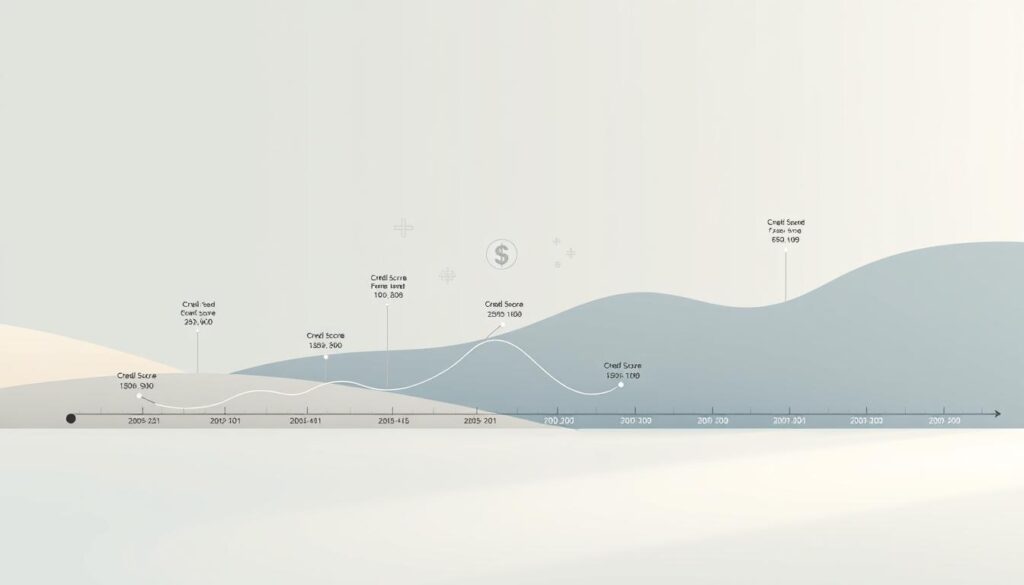Many people believe fixing their financial standing takes years, but with the right strategy, progress can happen faster than you think. A structured 90-day plan helps break down the process into manageable steps, making it easier to track improvements.
During this period, you’ll focus on reviewing your credit report, addressing errors, and building positive financial habits. The Fair Credit Reporting Act (FCRA) ensures disputes are resolved within 30-45 days, giving you a clear timeline for results.
Success depends on consistency. Small actions, like paying bills on time and reducing debt, add up quickly. While patience is key, seeing early progress keeps motivation high.
Key Takeaways
- A 90-day plan provides measurable milestones for credit improvement.
- Reviewing and disputing errors can lead to faster score boosts.
- Positive habits, like on-time payments, reinforce long-term success.
- FCRA guidelines ensure disputes are handled within 30-45 days.
- Tracking progress keeps you motivated and accountable.
Understanding Your DIY Credit Repair Timeline
Improving your financial health doesn’t have to take forever—structured steps can yield results in weeks. The Fair Credit Reporting Act (FCRA) ensures that bureaus investigate disputes within 30 days, making the first month critical for progress.

Why a 90-Day Plan Works
Three months strike a balance between quick wins and long-term habits. Early focus on errors, like incorrect late payments, can boost your credit score fast. Meanwhile, habits like lowering your credit utilization ratio solidify gains.
Key Factors That Shape Results
Not all negatives impact your score equally. Bankruptcies linger for 7–10 years, but simple disputes may resolve in months. Prioritize quick fixes first:
| Factor | Impact Timeline | Action |
|---|---|---|
| Disputes | 30–45 days | File early for faster resolution |
| Credit Age | 6+ months | Keep old accounts open |
| Utilization Ratio | 1–2 billing cycles | Pay down balances below 30% |
Your payment history matters most. One missed payment hurts less if you rebuild consistency. Tools like automatic payments help.
Remember: Quick fixes create momentum, but lasting change requires patience. Track changes monthly to stay motivated.
Days 1-30: Laying the Groundwork
Nearly 1 in 3 reports contain mistakes, making early review critical. The first month focuses on gathering data, spotting issues, and planning your strategy. Quick wins here set the tone for lasting progress.

Gathering Your Credit Reports from All Three Bureaus
Start by pulling reports from Equifax, Experian, and TransUnion. Use AnnualCreditReport.com for free weekly access. Compare all three—errors often differ by bureau.
Identifying Errors and Negative Items
Look for duplicates, incorrect late payments, or outdated collections. The FTC notes that 33% of reports have errors. Red flags include:
- Accounts you didn’t open
- Hard inquiries older than 2 years
- Medical debts under $500 (new rules favor removal)
Prioritizing Disputes by Severity
Not all errors hurt equally. Focus first on:
- High-impact mistakes (e.g., false late payments)
- Easy fixes (outdated inquiries)
- Complex issues (bankruptcies require documentation)
Example: A $500 medical debt was removed in 18 days under updated reporting policies. Quick action delivers fast results.
Days 31-60: Launching Disputes and Tracking Progress
Now that you’ve identified credit report errors, it’s time to challenge them systematically. This phase turns research into results, with disputes driving tangible improvements.

How to Draft Effective Dispute Letters
The FTC provides a dispute letter template, but customization boosts success. Include:
- Your details: Name, address, and report confirmation number.
- Clear errors: Highlight inaccuracies with dates and account numbers.
- Supporting information: Attach bank statements or payment records.
Example phrase: “The late payment marked on [date] for [account] is incorrect. Attached proof shows payment was made on time.”
Sending Disputes via Certified Mail
Certified mail with return receipt increases success rates by 40%. Steps:
- Address letters separately to Equifax, Experian, and TransUnion.
- Keep copies for your records and note the USPS tracking number.
- Limit to 5 disputes per letter—overloading may delay responses.
Monitoring Bureau Responses and Updates
Credit bureaus must reply within 30–45 days. Track responses with this table:
| Response | Meaning | Next Step |
|---|---|---|
| Verified | Bureau confirms the item is accurate | Request verification method or escalate |
| Deleted | Error removed from your report | Check for score updates in 1–2 weeks |
Follow up if the bureaus request more information. Persistence pays—72% of disputes resolved within months lead to score gains.
Days 61-90: Building Positive Credit Habits
The final stretch of your credit improvement plan focuses on reinforcing positive financial behaviors. Now that disputes are in motion, consistent habits will lock in gains and boost your score further.
Paying Down Balances to Improve Utilization
Your credit utilization ratio—how much you owe versus your limit—impacts 30% of your score. Aim for under 30% to optimize results. For example:
| Current Balance | Credit Limit | Utilization | Action |
|---|---|---|---|
| $1,500 | $5,000 | 30% | Pay $500 to drop to 20% |
| $900 | $3,000 | 30% | Pay $300 to reach 20% |
Prioritize high-interest debt first. Even small payments add up quickly.
Setting Up Automatic Payments for On-Time History
Payment history is the largest scoring factor. Automation reduces late payments by 80%.
“Consistency is key—three months of on-time payments can lift a VantageScore by 50+ points.”
Options include:
- Full balance auto-pay (avoids interest)
- Minimum payment reminders (if cash flow is tight)
Considering a Secured Credit Card
If rebuilding, a credit card with a security deposit reports to all three bureaus. Compare top options:
| Card | Deposit | Benefits |
|---|---|---|
| Discover Secured | $200–$2,500 | Cashback rewards, no annual fee |
| Capital One Secured | $49–$200 | Lower deposit, credit limit increases |
Use sparingly—keeping utilization below 30% still applies.
Common Challenges in Your 90-Day Credit Repair Journey
Even with a solid plan, credit repair isn’t always smooth sailing—some hurdles require extra effort. While many disputes resolve quickly, others demand persistence. Knowing how to navigate these roadblocks keeps your progress on track.
Dealing with Stubborn Creditors or Bureaus
Some creditors and bureaus resist fixing errors, even with clear evidence. If they claim an item is “verified” but you know it’s wrong, escalate strategically:
- File a CFPB complaint: The Consumer Financial Protection Bureau investigates disputes within 15 days. Include your report details and proof.
- Send a procedural request: Demand how the creditor verified the account. Under the FCRA, they must provide this information.
- Add a statement of dispute: If the item stays, require the bureaus to note your disagreement in your file.
“15% of verified items still contain errors. Don’t assume ‘verified’ means accurate.”
Handling Verified (But Inaccurate) Items
If a bureau insists an error is correct, take these steps:
- Gather evidence: Bank statements, payment confirmations, or letters proving the debt is wrong.
- Consult an FCRA attorney: Illegal verification practices (like ignoring proof) may warrant legal action.
- Dispute again: Resubmit with new details—each attempt increases removal chances.
Example: A creditor falsely reported a late payment. After two disputes and a CFPB complaint, the error was removed, boosting the credit score by 40 points.
Tracking Your Credit Score Improvements
Watching your credit score change can feel like tracking the weather—some days bring sunshine, others storms. Regular monitoring helps you spot trends, celebrate wins, and adjust your strategy. Over months, these small moves add up to big gains.
Tools to Monitor Your Score Weekly
Free tools make it easy to check your credit score without hurting it. Compare features to find your fit:
| Tool | Score Type | Best For |
|---|---|---|
| Credit Karma | VantageScore 3.0 | Weekly updates, credit card recommendations |
| Experian | FICO® Score 8 | Direct bureau data, dispute filing |
| CreditWise | VantageScore 3.0 | Dark web scans, no account required |
Tip: Use one tool consistently to track trends. Mixing score types (e.g., FICO vs. Vantage) can confuse progress.
Interpreting Fluctuations and Trends
Not all dips are disasters. Common reasons for changes:
- Credit utilization spikes: Pay down balances before the next billing cycle.
- New accounts: Hard inquiries drop after 2 years, but short-term drops are normal.
- Dispute resolutions: Removed errors may take 1–2 weeks to reflect in your score.
Example: A 20-point jump after lowering credit utilization from 50% to 30% shows the power of small adjustments.
Simulators predict how actions like paying off a card might change your score. Use them to plan next steps.”
When to Consider Professional Credit Repair Help
Sometimes, fixing credit issues requires more than just personal effort—knowing when to seek professional help can save time and frustration. While many disputes can be handled independently, complex cases often need specialized knowledge. Recognizing these situations early prevents wasted effort.
Signs You Might Need Expert Assistance
Identity theft cases almost always require professional intervention. If fraudulent accounts appear on your report, credit repair attorneys can navigate legal processes faster. They understand the Fair Credit Reporting Act (FCRA) protections that consumers might miss.
Persistent errors that survive multiple disputes signal deeper issues. When creditors verify inaccurate debt despite your evidence, lawyers can demand proper validation. About 15% of verified items remain wrong—experts know how to escalate these.
Time-sensitive situations like mortgage applications may justify hiring help. Professionals can accelerate disputes through direct bureau relationships. For example, Lexington Law resolves cases 30% faster than average DIY efforts.
Red Flags to Avoid in Credit Repair Companies
The FTC warns that 89% of scams request payment before delivering services. Legitimate firms only charge after performing work. Watch for these warning signs:
| Legitimate Company | Potential Scam |
|---|---|
| Provides free consultation | Demands upfront fees |
| Explains your legal rights | Guarantees specific score increases |
| Has licensed attorneys | Uses fake “credit doctor” titles |
| Offers monthly billing | Requires full payment immediately |
Always verify state bar membership for legal credit repair services. The Credit Pros and Lexington Law display active licenses prominently. Avoid companies that can’t provide this information.
“No ethical company promises to remove accurate negative items—focus on those addressing provable errors.”
Cost matters too. Professional services average $100-$150 monthly, while DIY costs mainly time. Weigh this against potential credit gains—a 50-point improvement could save thousands on loans.
Conclusion
Rebuilding financial trust takes effort, but small steps create lasting change. Over three months, you’ve reviewed reports, disputed errors, and built habits that improve credit health.
Keep momentum by tracking your credit score monthly. Automate payments, keep balances low, and celebrate progress—even minor gains add up.
Ready for more? Download our free dispute toolkit to tackle lingering issues. Your future self will thank you.













